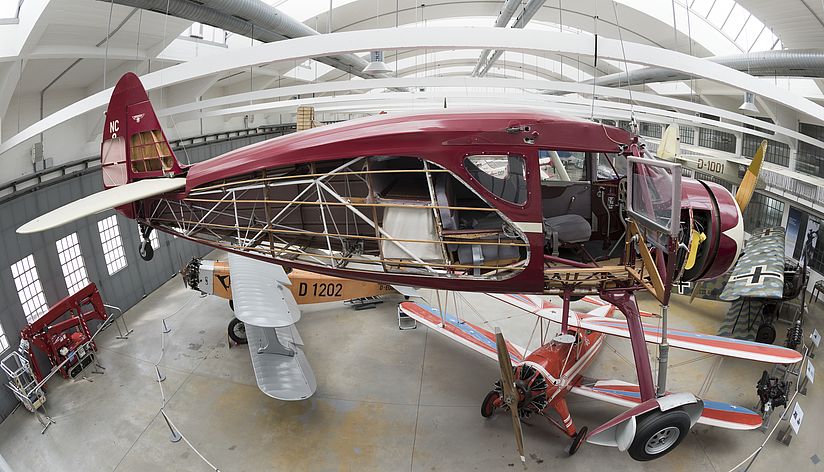Fairchild F 24 W46
The Fairchild 24 is a four-seater, closed-cabin touring and sport plane introduced to the market in 1932.

Photo: Deutsches Museum
It had a long production run, continuing until 1948. A total of 2,232 were built, including models for the US and British armed forces. They were used as transport and liaison aircraft during the Second World War. The Fairchild F 24 was powered both with radial and inline engines.
The aircraft is displayed with some of the outer fabric covering cut away to reveal the mixed airframe construction typical of that era. The load-bearing fuselage structure consists of welded steel tubing shaped aerodynamically through the use of wooden ribs and longitudinal members. The strut-braced wing is made of two struts joined by spars. The outer skin of the aircraft is a synthetic fabric known as Ceconite. (In the past, cotton was used.)
Technical specifications:
- Manufacturer: Fairchild Engine and Aircraft Corp., Dallas, Texas, USA, 1946
- Wingspan: 11.0 m
- Maximum take-off weight: 1,090 kg
- Cruising speed: 190 km/h
- Range: 820 km
- Power plant: Warner Super Scarab radial engine
- Power: 120 kW (165 HP)
